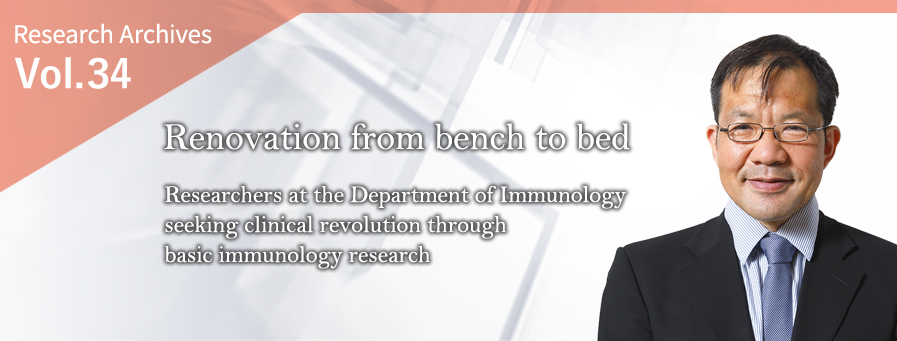
Department of Immunology, Graduate School of Medicine, Hokkaido University
Koichi Kobayashi M.D., Ph.D.Pathological Science
Academic & Professional Experience
- 1991 : MD. Chiba University, School of Medicine
- 1991-1994 : Chiba University, School of Medicine, Internal Medicine II
- 1992-1994 : Resident, Department of Internal Medicine, Asahi General Hospital
- 1998 : Ph.D. Chiba University, Graduate School of Medicine
- 1998-2003 : Postdoctoral Fellow, Yale University
- 2003-2004 : Associate Research Scientist, Yale University School of Medicine
- 2004-2011 : Assistant Professor, Dana-Farber Cancer Institute/Harvard Medical School
- 2011-2012 : Associate Professor, Dana-Farber Cancer Institute/Harvard Medical School
- 2012- : Professor, Texas A&M Health Science Center (current. Co-appointed)
- 2017- : Professor, Department of Immunology, Hokkaido University Graduate School of Medicine
Discovery of the regulatory mechanism of MHC gene expression
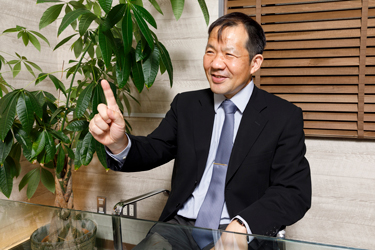
The Department of Immunology was established as the Department of Bacteriology when the School of Medicine was founded at the Hokkaido Imperial University. Since then, the Department has made significant contributions in local, domestic and international community of medicine. Some examples include being an administrative/research center for public health activities in Hokkaido prefecture and operating as a central laboratory for the Hokkaido University Hospital. The department played key roles in establishing two local medical institutes; one was the Hokkaido Institute of Public Health, and the other was Asahikawa Medical University. Moreover, the department has been known for strong tradition of research in the innate immunity field. An alumni, Dr. Yasuichi Nagano, is known for his discovery of type I interferon, one of critical defense mechanism against viral infection.
Professor Koichi Kobayashi has been engaged in research in the United States for the last two decades. He studied innate immunity at Yale University in the late 1990s. He became a faculty member of Harvard Medical School in 2004, operating his laboratory at the Dana-Farber Cancer Institute in Boston. He moved to the Texas A&M Health Science Center in Texas, USA as a professor in 2012. The Department of Immunology at Hokkaido University is the third laboratory led by Professor Kobayashi. Currently, his main research include (1) regulation of MHC gene expression[1], (2) the development of novel cancer biomarkers and immunotherapies, (3) the study of the immune evasion mechanism of SARS-CoV-2, (4) development of a next-generation vaccine platform, and (5) innate immunity: the host defense mechanism of TLR and NLR protein family. Recently, the laboratory has identified the function of NLRC5, a major regulator of MHC genes, which has been known as the most important gene in modern medicine. Moreover, the laboratory succeeded in developing a method for predicting the therapeutic effects of immunotherapy.
“Virus-infected cells show viral antigens to immune cells to instruct that they are infected with virus and should be eliminated. Cancer cells are also eliminated by a similar mechanism. Cancer antigens are shown to immune cells from the cell surface of cancer cells by the molecule called MHC class I. We found that an immune gene called NLRC5 plays a central role in this process. If the NLRC5 gene does not function properly, it results in poor expression of MHC class I and insufficient immune responses to cancer,” says Professor Kobayashi. Following this research, they focused on NLRC5 for its therapeutic effect on cancers. His group found that the level of NLRC5 expression determine the therapeutic effect of checkpoint inhibitors on cancers. Skin cancer patients with high NLRC5 expression responded to checkpoint inhibitor therapy efficiently, while the therapeutic effect was low for patient group with low expression of NLRC5. The results of this research was published in Scientific Reports on February 5, 2021.
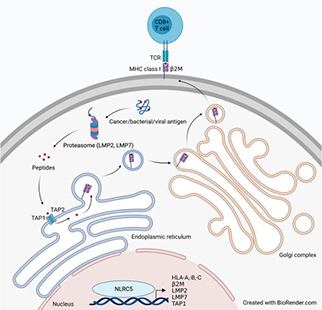
Recent development of checkpoint inhibitors targeting immunosuppressive molecules provided great impact on the medicine as highlighted by Nobel Prize to Drs James Allison and Tasuku Honjo in 2019. Checkpoint inhibitors provide an effective therapeutic strategy against multiple cancers. However, there are several concerns about the current immune checkpoint inhibitors, such as Opdivo. First, they are very expensive, providing heavy financial burden on the health care system. Second, they frequently elicit serious side effects caused by excessive immune responses. Finally, only 20 to 30% of patients respond to the therapy even in the case of skin cancer for which checkpoint blockades are most effective. The study outcome by Dr Kobayashi’s group enables doctors and patients to predict if cancer patients respond to the checkpoint blockade therapies before initiating the treatment. Therefore, it will significantly contribute to the strategies of cancer therapies by providing information for which treatment approaches are most appropriate for individual cancer patients.
“The MHC class I molecule is essential for the function of CD8 + T cells. This is why MHC class I is important for a wide range of pathological conditions and diseases, such as viral and bacterial infections, cancer immunity, transplant immunity, vaccines, and inflammatory diseases. Therefore, the research targets of our group are expanding,” says Professor Kobayashi.
Development of a novel vaccine technology through research on the innate immune system
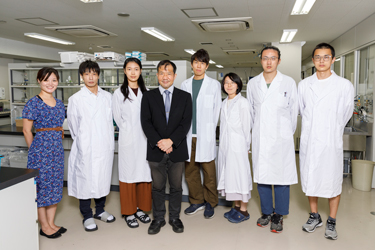
Another major research focus of the department is the innate immune system. In particular, we study the host defense mechanism of the TLR and NLR protein family members, which are receptors for innate immunity.
“There are 10 TLRs and 22 NLRs in human, and each of them recognizes different things. One of NLR protein, Nod2, is related to the onset mechanism of Crohn’s disease[2]. Our research has found that mutations in the Nod2 genes results in the breakdown of intestinal immunity, creating a predisposition to Crohn’s disease.”
The results of this research has drawn attention as being directly linked to clinical applications. Recently, we found an innate immune system that exists widely in the animal kingdom. This study has led to the development of a new vaccine-developing technology. This technology can be applied to various vaccines against cancer and pathogens such as SARS-CoV-2 and tuberculosis.
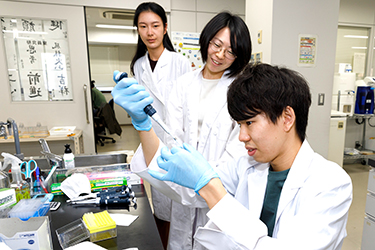
“Our motto is to carry out research that others would not do without being affected by trends, and to aim to contribute to progress of medical science in the long run. It’s our pleasure to face and solve each scientific problem one by one” says Professor Kobayashi about his laboratory research style. Professor Kobayashi has gradually moved to Hokkaido University from Texas A&M University. He has been actively recruiting staff and enthusiastic students from overseas. As a result, the laboratory is very international. Most conversations and meetings are in English, and foreign speakers are invited occasionally to giving seminars. Students carry out their own research projects independently under the guidance of their supervisor. The goal is that each student can become independent and established researchers who can thrive in the international science community.
“Basic medical research has a potential to dramatically change the medicine within a couple decades. Our medical and graduate students can make it happen. I believe so through my past research experience. Most large leaps in clinical medicine in the past were based on the discoveries in basic medicine. I hope that our students will contribute to the medical community tremendously through their research activities,” Professor Kobayashi says.
[1] ^ The MHC (HLA in humans) molecule is one of the most important molecules in modern medicine, and the Nobel Prize has been awarded to a total of six scientists in the relevant field. Professor Kobayashi’s research group has discovered the key regulator of the MHC class I molecule.
[2] ^ Crohn’s disease is one of the inflammatory bowel diseases that causes chronic inflammation in the intestinal tract. It repeats remission and relapse, and no radical cure has yet been established.
(Interviewed in August 2021)
Top-level classes that always make students aware of the “world”
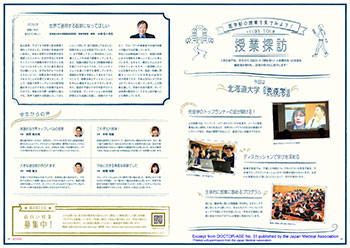
The Department of Immunology has introduced cutting-edge methods and world famous investigators to the class room of medical students. Taking advantage of Professor Kobayashi’s network in the United States, the department invites the world’s top researchers in immunology as lecturers every year. Students can listen to the lectures of the researchers who have studied with Nobel laureates and ask questions freely. These provide valuable experiences. The classes are mainly provided in English for both undergraduate and graduate students, and various types of active learning are adopted. Students can experience the world’s “first-class researchers” and learn with awareness of the world from their undergraduate years. In the fall of 2019, a student recommended the course to the medical student magazine DOCTOR-ASE, which ran an article about the course.


